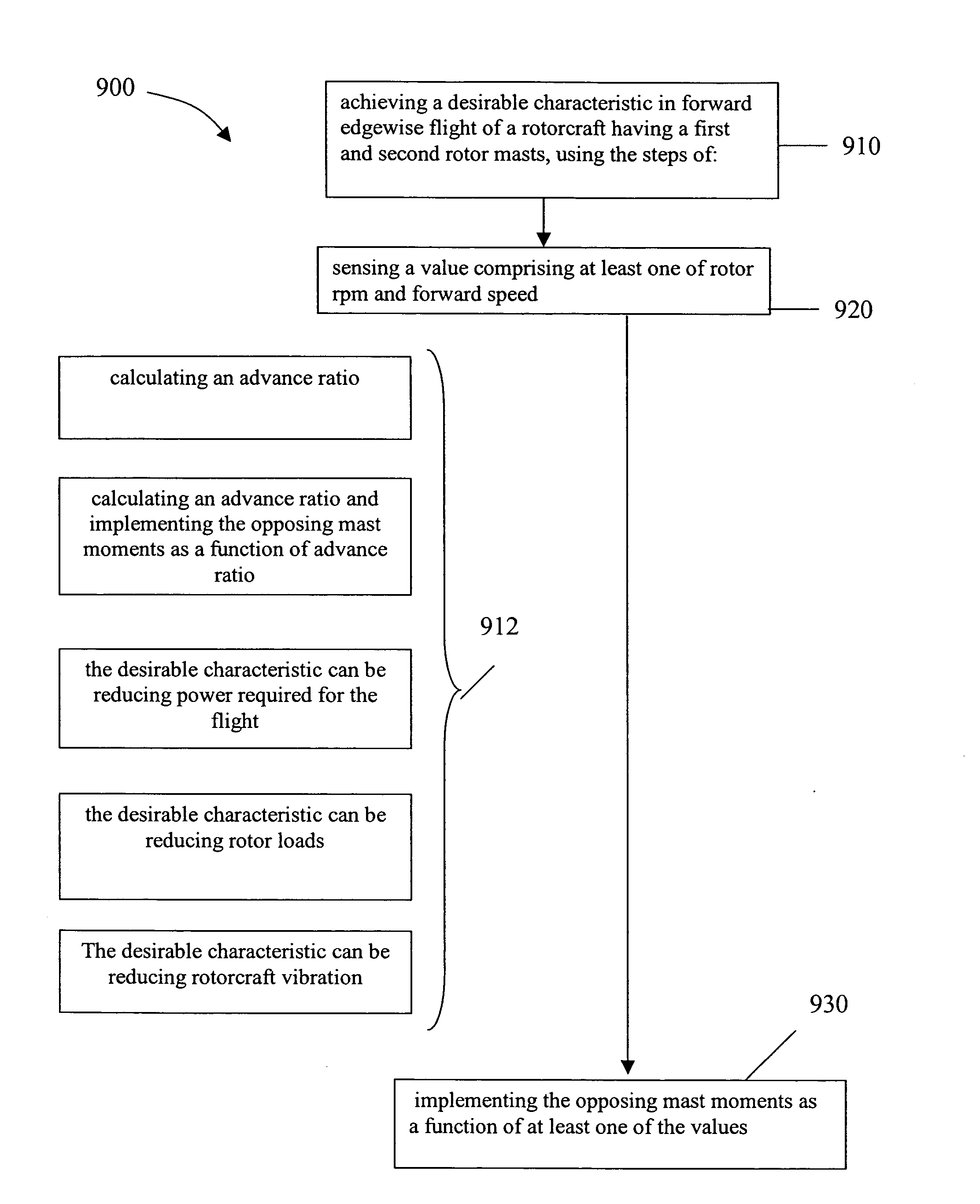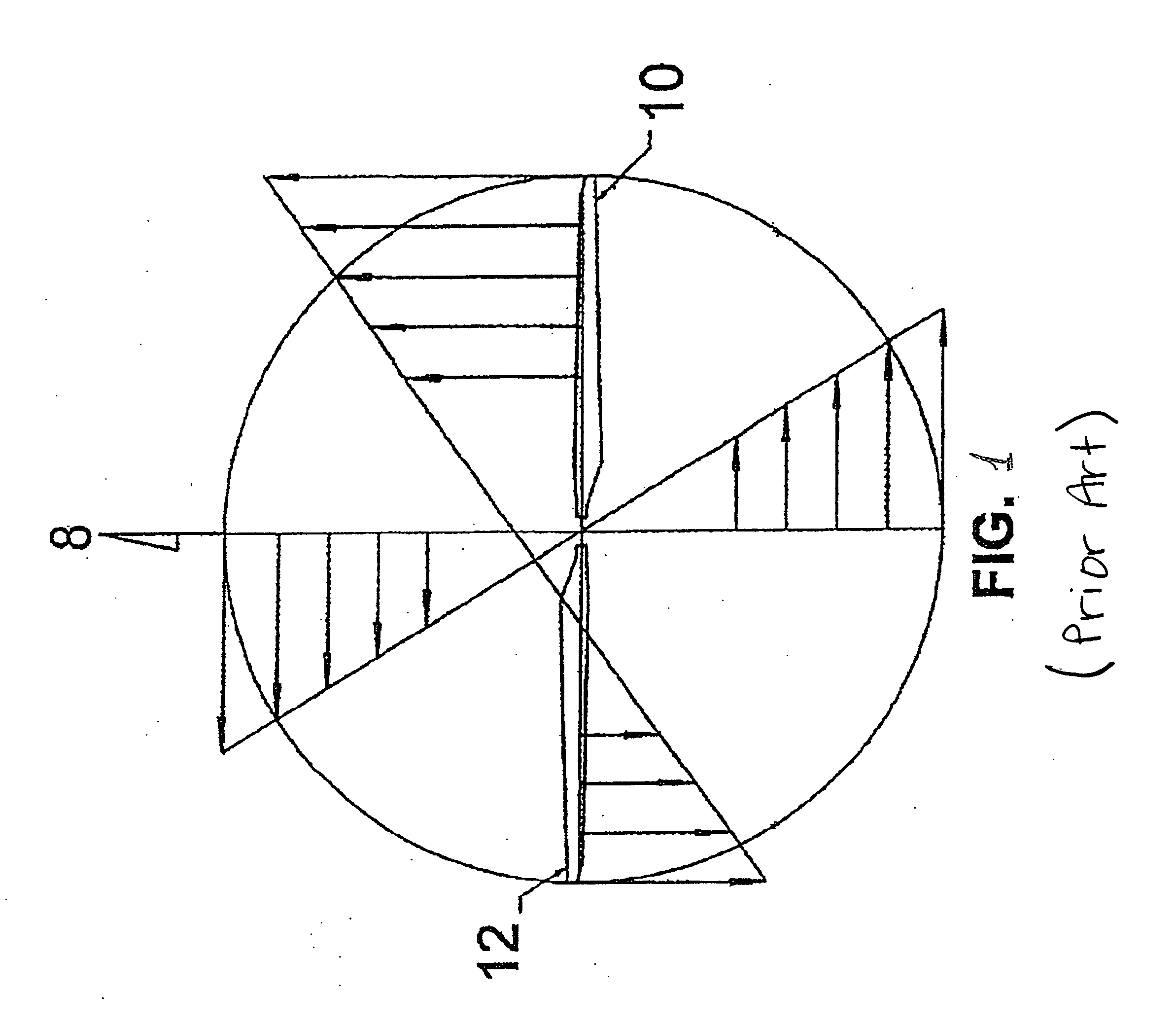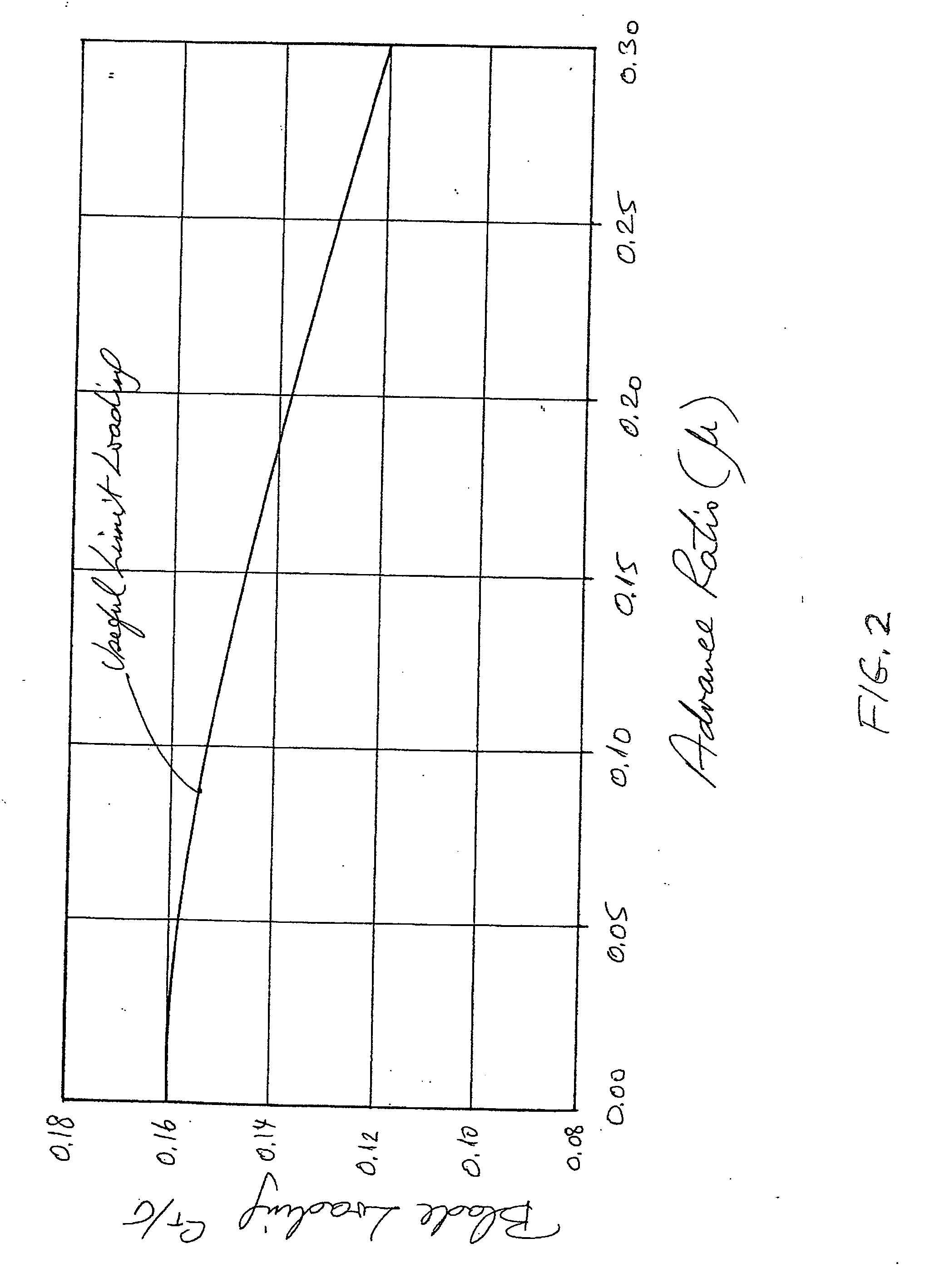Rotorcraft with opposing roll mast moments, and related methods
a technology of rotorcraft and roll mast, applied in the field of rotorcraft, can solve the problems of limited roll mast moment and more mechanical control authority, and achieve the effects of reducing the angle of attack and lift of the retreating blade, reducing the vibration level of the blade and the rotorcraft, and reducing the oscillatory load and rotorcraft vibration level of the blade and rotor
- Summary
- Abstract
- Description
- Claims
- Application Information
AI Technical Summary
Benefits of technology
Problems solved by technology
Method used
Image
Examples
Embodiment Construction
[0025]In FIG. 3, a twin tandem-rotor rotorcraft 100 is capable of moving in a forward direction of flight 105 using forward rotor 110 and aft rotor 120. Forward rotor 110 includes blades 110A, 110B, and 110C, and rotates in a counterclockwise direction. Aft rotor 120 includes blades 120A, 120B, and 120C, and rotates in a clockwise direction.
[0026]In a manner similar to that known for rotorcraft having rigid or semi-rigid co-axial rotors, a control mechanism 150 applies higher lift on the advancing blade of each rotor so that the mast moments on the two rotors substantially (i.e. except for the desired control rolling moment) cancel each other out. In this particular example, at the instant of the drawing, increased lift would be applied to blade 110A of rotor 110, and 120B of rotor 120. Of course, the situation changes as blades rotate to different positions, but in general it can be said that relatively increased lift is applied to blades of rotor 110 when positioned in the directi...
PUM
 Login to View More
Login to View More Abstract
Description
Claims
Application Information
 Login to View More
Login to View More - R&D
- Intellectual Property
- Life Sciences
- Materials
- Tech Scout
- Unparalleled Data Quality
- Higher Quality Content
- 60% Fewer Hallucinations
Browse by: Latest US Patents, China's latest patents, Technical Efficacy Thesaurus, Application Domain, Technology Topic, Popular Technical Reports.
© 2025 PatSnap. All rights reserved.Legal|Privacy policy|Modern Slavery Act Transparency Statement|Sitemap|About US| Contact US: help@patsnap.com



